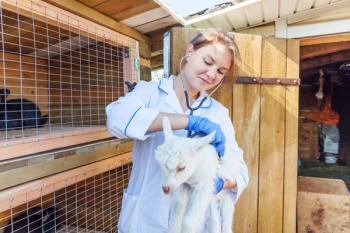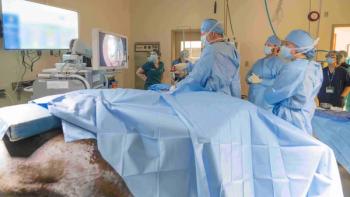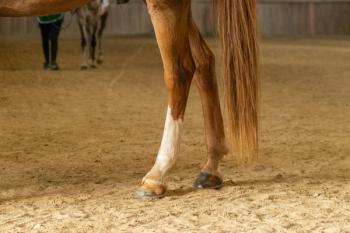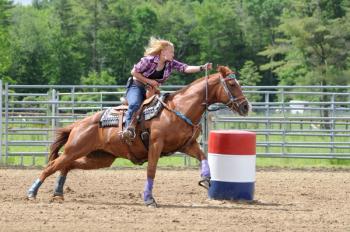
Veterinarian, trainer, owner: Whos looking out for the racehorses health?
The answer, of course, should be all of thembut things can get tricky in this triangulation of communication.
In a 2009 white paper, the American Association of Equine Practitioners (AAEP) makes a fairly pointed statement about its current level of satisfaction regarding the veterinarian-owner-trainer relationship:
Open and consistent communication between the owner, the trainer and the veterinarian will develop a relationship built on trust and shared philosophies. The result will be decisions that are made in the best interest of the horse. The current reality of racetrack operations is that the owner is often excluded from the communication chain, and we as veterinarians would like to change that. Veterinarians also are sensitive to the costs of services that are provided. It is important for owners to know that veterinary care is not given to any racehorse without the trainers direct or implicit approval and that their trainer is acting as their legal agent when requesting veterinary services for their horses. Without open communication, differing management philosophies often result in confusion and dissatisfaction.
In order to provide complete transparency for the veterinary-owner-trainer relationship, the AAEP recommends the following:
Trainers should include horse owners in all aspects of healthcare decisions.
Owners should have a thorough understanding of the medication and training philosophy of their trainer with particular emphasis on the level of medical care provided to their horses.
Veterinarians should provide unfettered access to owners and trainers for consultation and discussion of medical treatments.1
An on-the-ground perspective
Scott Hay, DVM, a racetrack veterinarian with Teigland, Franklin, and Brokken in Fort Lauderdale, Florida, and a member of the AAEP task force that created the white paper, lives in this murky reality every day. There is some difficulty in the communication stream between some veterinarians and some owners, particularly in racing, because often the owners are absent from the racetrack, Hay says. They are not always fully engaged in the communication stream with their veterinarian or even with their trainer.
Hay explains that its common for horse owners to leave health-related decisions to their trainers after offering some general guidance. In those cases, practitioners work closely with the trainers who are on the grounds to determine whats best for the horse. Its a matter of involvement, Hay says.
Still, Hay continues, many of those absentee owners frequently like to know whats going on with the horse, so the veterinarian and trainer will spend time communicating with them about healthcare decisions more often, and all can still work in concert as a team for the healthcare of the horse, he says.
Other owners are present on the racetrack themselves and are thoroughly involved with their horses care, staying in direct communication with the veterinarian to make medical decisions, Hay says.
In addition to level of involvement, there is also variation in owners approach to their horses health. For example, some owners want their horse to be vaccinated for a myriad of diseases, although the horse would rarely come in contact with many of those diseases, Hay says. Others think more about economics; they only want the veterinarian to administer those medications that are absolutely necessary. Owners also vary over things like preventive medications for joint health and oral supplements.
Typical care for performance health
When it comes to veterinary care of the racehorse, owners, trainers and veterinarians are primarily focused on two areas: respiratory issues and lameness.
Respiratory issues. We are always evaluating the horses respiratory system for issues such as EIPH [exercise-induced pulmonary hemorrhage], for inflammatory airway disease, and for functional abnormalities of their airway, Hay says. But how owners and trainers go about evaluating the horse with their veterinarian again varies significantly.
I deal with some trainers and owners who want endoscopic examinations done every time after a horse works at high speed or races, Hay says. I deal with other groups of trainers and owners who only want to do an endoscopic exam when they think their horse has a problem.
From the AAEP: Rules to protect racehorse health
A period of rest for all horses provides an opportunity to refresh and diminish the volume of persistent cyclic loading that occurs in the absence of rest.
No horse shall be permitted to race within 10 days of its last start.
Every horse entered to race must be on association grounds early enough to have a pre-race veterinary inspection for racing soundness by the regulatory veterinarian.
Standardization and enhancement of pre-race and post-race veterinary examinations with mandatory cross-jurisdictional sharing of information are essential.
There must be uniform participation by all jurisdictions in injury reporting for both racing and training injuries.
There must be investment by all racing venues in capital improvements of the racing oval that will enhance horse [along with rider and personnel] safety such as safety rails and padded starting gates.
All racing jurisdictions should immediately adopt ARCI riding crop and shoeing standards.
Source: Adapted from American Association of Equine Practitioners. Putting the horse first: Veterinary recommendations for the safety and welfare of the thoroughbred racehorse. 2009;
While economic considerations are a factor in how frequently veterinarians do endoscopic examinations, Hay says it doesnt necessarily make financial sense to do them less often. They give us a tremendous amount of information when we do numerous observations, he says. Therefore the economics can often play in favor of examining more often. Its important to get ahead of a respiratory condition a particular horse might be experiencing. ... If you can diagnose these issues earlier and treat them at the early stage, you can help that horses performance.
Lameness. Of course, the other area veterinarians are primarily concerned about is lameness. The more a practitioner is able to assess the horse for lameness issues, the more likely it is that he or she will discover even a subtle lameness issuea lower-grade abnormality that might not be as apparent, Hay says. If youre not allowed to do frequent examinations with these horses, youre not going to discover some of these subtle lameness issues.
Hay says some trainers like to discover a lameness issue for themselves, then bring it to the attention of the veterinarian. Others like to have their veterinarian by their side when theyre evaluating the horse for lameness. Others want more frequent or thorough exams as they trot a horse for soundness evaluations. Those are the horses you can get ahead of as far as discovering some new or oncoming problem, Hay says.
The owners philosophy about testing and diagnosing lameness issues and cost sensitivity often affect how a veterinarian will go about diagnosing lameness issues, Hay says. Thats a discussion the practitioner needs to have with owners, so theyre clear about how they want the veterinarian to go about his or her work, he says.
Not only is a veterinarian looking for overt lameness, notes Hay; the practitioner is also trying to discover potential warning signs: filling, heat or swelling of a joint; signs of joint disease; or soft tissue issues. We want to try to determine whats causing the problem so that we can do something to prevent it from getting worse, Hay says. Whether it be rest, more diagnostic tests, or possibly a joint injection to try to reduce inflammation, there are various ways to try to reduce potential lameness problems.
Besides walking and jogging the horse, palpating the joints and soft tissues and doing flexions, a racetrack veterinarian will also talk to the horses handlers. Well ask the trainer what theyre seeing, what theyre observing on the racetrack, Hay says. Well talk to the exercise rider about what theyre feeling. Is there something theyre concerned about? Its a little bit of an investigation to determine the subtle issues the horse might have.
Or maybe the horse is 100 percent healthythats important to determine as well, Hay says. In some cases we have to observe and test the horse multiple times in order to determine what the problem is and what the answer isif there is one. We might have to watch the horse on the racetrack and do some diagnostic tests if we dont see something overt that is causing the lameness.
Bottom line, Hay continues, every individual horse and every exam is different. Although veterinarians have to try to approach lameness, airway and other problems systematically, its an individual horses signs that determine the right course of action. And in the horseracing world, that means a whole team of peopleowner, trainer, riders and veterinarianneed to be looking out for the horses health.
Reference
1. American Association of Equine Practitioners. Putting the horse first: Veterinary recommendations for the safety and welfare of the thoroughbred racehorse. 2009;
Newsletter
From exam room tips to practice management insights, get trusted veterinary news delivered straight to your inbox—subscribe to dvm360.




